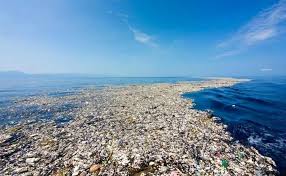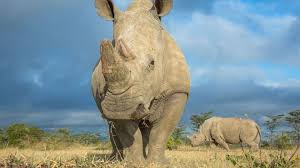In 2018, 7.7M tonnes of solid waste was created, which actually was a decrease of 9,000 tonnes compared to 2017 (NEA, 2019). However, to put this into perspective, the amount of waste recycled was also reduced, but by 90,000 tonnes (NEA, 2019). This can be attributed to many factors, such as the global increase of plastic production, which is one of the least recycled materials (only 4% of plastic in 2018 was recycled) (Senet, 2019). Increases in waste that is not recycled pose a huge threat to the planet: it leads to the loss of species, contamination of ecosystems, air pollution, and also the destruction of beautiful sceneries (European Environmental Agency, 2016). Many different companies are starting to leverage technology advancements however, to actually make use of a waste as a resource.
The city of São Paulo has 12.5M people, and produces 8% of Brazil’s waste. This translates to 20,000 tonnes daily. Through a blockchain software by a start-up, the waste practices of the city are analysed and released, such as data on water usage, energy usage, or what firms different companies hire to manage their waste. This practice is expected to increase the efficiency of waste management; it is estimated that $30M will be saved in the reduction of shipments to landfills. Instead of these shipments being scheduled at a fixed period in time, they are now done based on the data provided, so the companies know when trucks will be full, maximising utility. Additionally, before this service, only 16,000 companies (a mere 5% of the companies situated in São Paulo) hired specialist waste managers. After only 90 days of this service, the number has jumped to 35,000 companies, and the number of waste managing companies increased drastically from 80 to 400! For one of the most populated cities on world, the digitisation of waste management has led to economic, social and environmental growth, as people and companies become more aware of how inefficient their waste management practices were prior, and how optimised they can become. This successful technology has turned waste in São Paulo from literal waste to an opportunity to exploit. (Sousa 2019)
Another example is seen in Lisbon, with their digitised trash containers. By keeping real-life information on the weight inside the containers, garbage trucks and/or trash management companies know when to schedule pick-ups and what specific paths to take (hence avoiding streets where the containers may not be full), again optimising the process overall. The use of the IoT benefits all players, as not only do companies benefit, but also the citizens: there is less waste seen now that trash cans are emptied when they need to be empty, avoiding spillovers of trash. (Georgieva, 2019)
The digitisation of the waste management industry has revolutionised cities, and will likely only improve the situation. However, this is simply a response to the problem, but not a fix to the underlying problem. With waste production continuously increasing, this is indeed an opportunity for waste management companies. However, if waste production does not decrease, the planet will be faced with more, harsher threats. For waste to truly be an opportunity for all, technology needs to be leveraged to introduce a circular economy in all industries. A circular economy would allow us to not have to exploit as many natural resources, as many materials can simply be reformulated and reused. It would also reduce the disposal of waste, avoiding another instance of a Great Pacific Garbage Patch.
References
European Environment Agency. (2019). Waste: a problem or a resource?. [online] Available at: https://www.eea.europa.eu/signals/signals-2014/articles/waste-a-problem-or-a-resource#targetText=Air%20pollution%2C%20climate%20change%2C%20soil,gas%20linked%20to%20climate%20change. [Accessed 2 Oct. 2019].
Georgieva, O. (2019). Garbage bins in Lisbon tell when they are full. [online] Themayor.eu. Available at: https://www.themayor.eu/en/garbage-bins-in-lisbon-tell-when-they-are-full [Accessed 2 Oct. 2019].
NEA. (2019). Waste Statistics and Overall Recycling. [online] Available at: https://www.nea.gov.sg/our-services/waste-management/waste-statistics-and-overall-recycling#targetText=Key%20highlights,to%2060%20percent%20in%202018. [Accessed 2 Oct. 2019].
Senet, S. (2019). Plastic production on the rise worldwide but slowing in Europe. [online] www.euractiv.com. Available at: https://www.euractiv.com/section/energy-environment/news/while-global-plastic-production-is-increasing-worldwide-it-is-slowin-down-in-europe/#targetText=After%20the%20manufacturing%20of%20plastics,fell%20by%204.3%25%20in%202018.&targetText=At%20a%20global%20level%2C%20plastic,compared%20to%20the%20previous%20year. [Accessed 2 Oct. 2019].
Sousa, C. (2019). The world produces 2 billion tons of trash. Can technology help?. [online] World Economic Forum. Available at: https://www.weforum.org/agenda/2019/09/the-benefits-of-digitizing-waste-management/ [Accessed 2 Oct. 2019].


